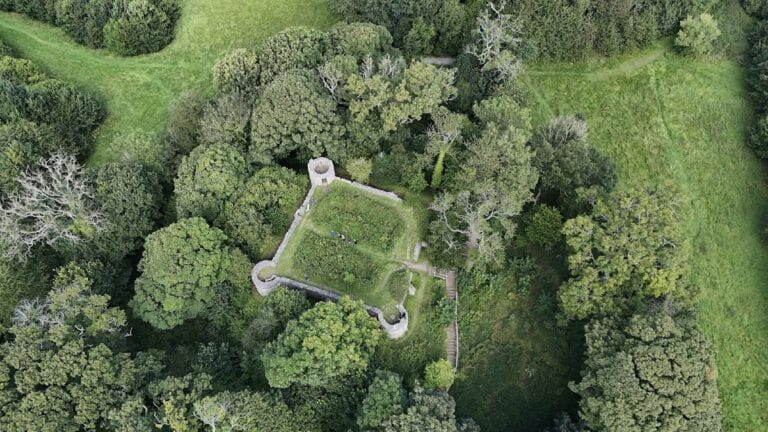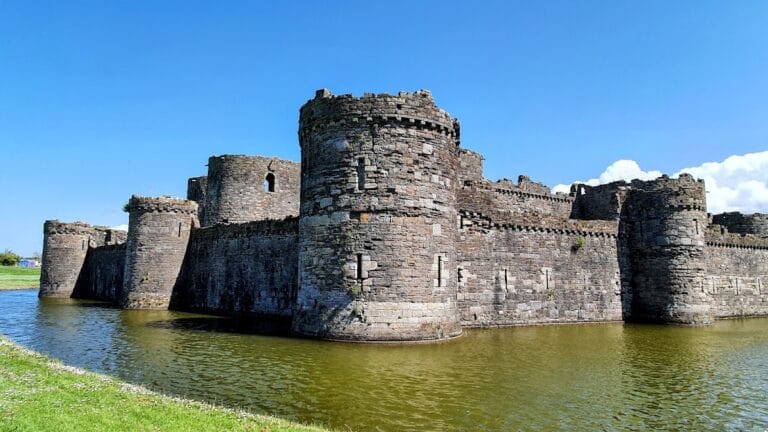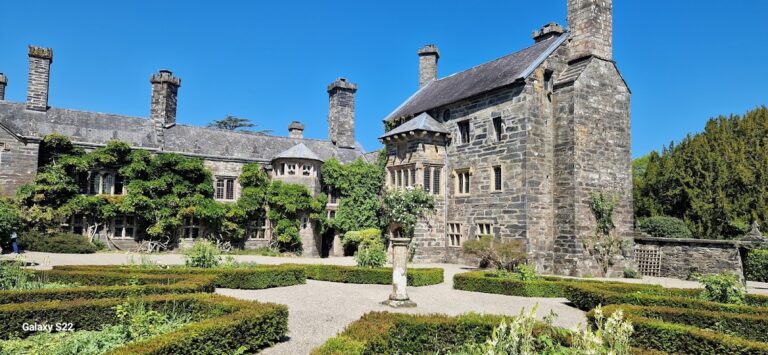Deganwy Castle: A Historic Welsh Stronghold Overlooking the River Conwy
Visitor Information
Google Rating: 4.6
Popularity: Low
Google Maps: View on Google Maps
Official Website: coflein.gov.uk
Country: United Kingdom
Civilization: Medieval European
Remains: Military
History
Deganwy Castle stands on a volcanic outcrop overlooking the mouth of the River Conwy in the town of Deganwy, Wales. Originally established by the early medieval Welsh, it served as a fortified seat for local rulers during the early part of the first millennium.
The site’s earliest known occupation dates back to Roman times, but it gained prominence after Roman forces withdrew from Britain. During the early medieval period, around 520 to 547 AD, Deganwy was the stronghold of Maelgwn Gwynedd, King of Gwynedd, who ruled a powerful Welsh kingdom in the region. The fortress was primarily constructed from timber, taking advantage of the naturally defendable position atop the volcanic rock. This elevated location protected inhabitants from Irish raids, common after the Roman departure. In 812, the wooden fortress was destroyed by a lightning strike, marking the end of this initial phase.
Following the Norman conquest of England in 1066, the castle came under Norman control. By 1073, Robert of Rhuddlan had constructed a Norman fortification at Deganwy, though this presence was short-lived. In 1094, Welsh forces successfully expelled the Normans from the site as part of wider rebellions against Norman rule. The castle’s status during the 12th century is not well documented, leaving a gap in its historical record.
In the 13th century, significant stone fortifications were added under Prince Llywelyn ab Iorwerth, emphasizing the castle’s strategic importance in the Welsh-English border conflicts of the time. Llywelyn strengthened the castle with a stone ring wall and other defenses. The Earl of Chester captured Deganwy in 1210 but soon after it was reclaimed and further refortified by Llywelyn. Notably, in 1241, Llywelyn’s successor, Dafydd ap Llywelyn, ordered the castle’s destruction to keep it out of English hands. Shortly afterward, King Henry III of England rebuilt Deganwy Castle, investing over £2200 in its fortifications, including construction of a bailey and gatehouses. Henry III also founded a small settlement nearby.
The conflict between Welsh princes and English monarchs persisted, culminating in Llywelyn ap Gruffudd’s destroying the castle again during a siege in 1263 amid ongoing wars. After this period, Edward I constructed Conwy Castle in 1283, positioned across the estuary, effectively replacing Deganwy as the dominant fortress in the region. Deganwy was left to ruin, reflecting the shifting power dynamics along the contested border known as Perfeddwlad.
More recent archaeological work, notably Leslie Alcock’s excavations in the 1960s, revealed connections between the early medieval rulers at Deganwy and broader Mediterranean trade networks through discoveries such as imported pottery. A geophysical investigation in 2009 explored the bailey and surrounding land, contributing further to understanding the site’s layout and occupation.
Remains
Deganwy Castle occupies two volcanic hills with distinct defensive features linked by a bailey—an enclosed courtyard—situated between them. The earliest fortifications, dating to the 5th and 6th centuries, were built mainly from timber atop the western summit. Archaeological excavation uncovered earthworks including ditches and mounds, revealing the layout of the original wooden stronghold. These earthworks remain visible today, marking the footprint of the early fortress.
By the 13th century, stone replaced timber as the principal building material. The western hill featured a stone ring wall encircling the summit, designed to provide strong defense. Within this enclosure stood a round tower and a large hall known as a palas, serving likely as the living quarters of the castle’s lord. From this inner ward, a passage led down to the outer bailey, which was itself fortified.
Henry III’s reconstruction introduced additional stonework around the bailey located between the two hills. The northern side was protected by a partially completed stone wall and ditch, along with a gate tower that remained unfinished. The southern boundary included a stronger stone wall punctuated by a gatehouse flanked by two D-shaped towers, providing controlled access to the castle grounds. Although only fragments of this masonry survive, they give insight into the ambitious scale of the 13th-century building efforts.
Adjacent to the bailey, on its northern side, was a small borough established by Henry III. Archaeological investigations have found remains of structures here, including a chapel and a horse mill, which would have served the inhabitants of the settlement and castle alike.
On the eastern hill, a distinctive U-shaped tower once stood, known in later accounts as Mansell’s Tower. No visible ruins remain of this structure today. Materials from Deganwy Castle, including stone blocks, were reportedly salvaged and reused in the construction of Conwy Castle and its town walls during Edward I’s campaigns.
At present, Deganwy Castle largely consists of earthworks and scattered stone ruins. The visible features stand as remnants of its long history of construction, destruction, and strategic importance across centuries of Welsh and English contest.










